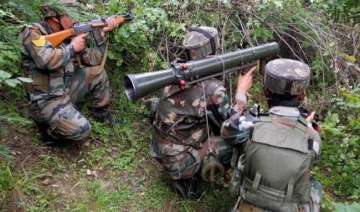Eyewitnesses across LoC confirm India’s ‘surgical strikes’ in PoK, say bodies were taken away on trucks next morning
Amid demand of proofs of surgical strikes by Pakistan, locals living in PoK have come forward providing graphic details of the September 28 incident.

Amid growing demands by Pakistan for proof to corroborate India’s claims of having conducted surgical strikes by Pakistan, locals living in areas in Pakistan occupied Kashmir that Indian forces struck have now come forward providing graphic details of the September 28 incident.
According to The Indian Express, it contacted five eyewitnesses through their kin living on the Indian side of the Line of Control, who were questioned using an encrypted chat system as Indian journalists have no access to the Pakistani side of the LoC.
According to the eyewitnesses, bodies of those killed in the operation were loaded on trucks for secret burials in the wee hours of September 29.
They further described that the fire engagements were ‘short’ but ‘powerful’, which destroyed makeshift buildings that housed jihadists before they left for the last stage of their journey across the LoC.
These details by the eyewitnesses from across the LoC substantiate India’s claim of carrying out surgical strikes on terror camps in PoK, which has been denied by Pakistan so far saying that it was just cross-border firing with small arms and mortar.
On the other hand, they have also provided the details on some of the locations which were targeted by Indian Army during the operation, information which has not been made public by both the governments so far.
They revealed about locations in PoK like Dudhnial, Al-Haawi bridge, Chalhana and Leepa, that are the operating points of terror outfits like Lashkar-e-Taiba and some of them also have Pakistani military base camps.
The report further claims that the details provided by the eyewitnesses as well as the intelligence records suggest that fatalities in the strikes may have been less than 38-50 as reported, and have caused little damage to jihadist logistics and infrastructure.
However, the eyewitness accounts by the paper are limited to one of the many areas that Indian troops are believed to have hit and the number could grow with more flow of information over the days.
The most detailed account of the strike was provided by two witnesses who visited Dudhnial, a small hamlet some 4 km across the LoC from India’s nearest forward post, Gulab, ahead of the town of Kupwara.
They reported seeing a gutted building across the Al-Haawi bridge from the hamlet’s main bazaar, where a military outpost and a Lashkar camp are situated.
The two eyewitnesses said that the Al-Haawi bridge is the last point where infiltrating groups are provided with supplies before beginning their climb up to the LoC towards Kupwara.
One of them said that the local residents told him that loud explosions – possibly rounds fired from 84mm Carl Gustav rifles – were heard from across the Al-Haawi bridge late night on September 28.
“People did not come out to see what was going on, so did not see Indian soldiers but they gathered from the Lashkar people the next day that they had been attacked,” one of the eyewitnesses was quoted by The Indian Express as saying.
The eyewitnesses said local residents told them that five, perhaps six, bodies were loaded on to a truck early next morning and were transported to the nearest Lashkar camp at Chalhana, across the Neelum river from Teetwal, on the Indian side of the LoC.
Meanwhile, another eyewitness said that the Friday prayers at a Lashkar-affiliated mosque ended with a cleric vowing to avenge the deaths of the men killed the previous day.
“The Lashkar men gathered there were blaming the Pakistan Army for failing to defend the border and saying they would soon give India an answer it would never forget,” he said.
One of the eyewitnesses said that Leepa, a complex of some 25 hamlets located at the bottom of the Qazi Nag streamflowing down from the mountains above Naugam, on the Indian side of the LoC, was one of the terror launch pads targeted by the Indian Army during the operation.
He said the villagers told him that they had seen a Lashkar-occupied three-storied wooden building destroyed by Indian troops near the hamlet of Khairati Bagh – previously a major Lashkar base which offers multiple lines of access into northern Kashmir through Chowkibal and the Bangas bowl.
The villagers told the eyewitnesses that three to four Lashkar personnel were killed in the raid, whereas others fled into the adjoining forests after the firing began.
The eyewitnesses also told that the strikes appeared to have taken place near military camps alog the Katha Nar stream that empties into the Neelum river just north of the town.